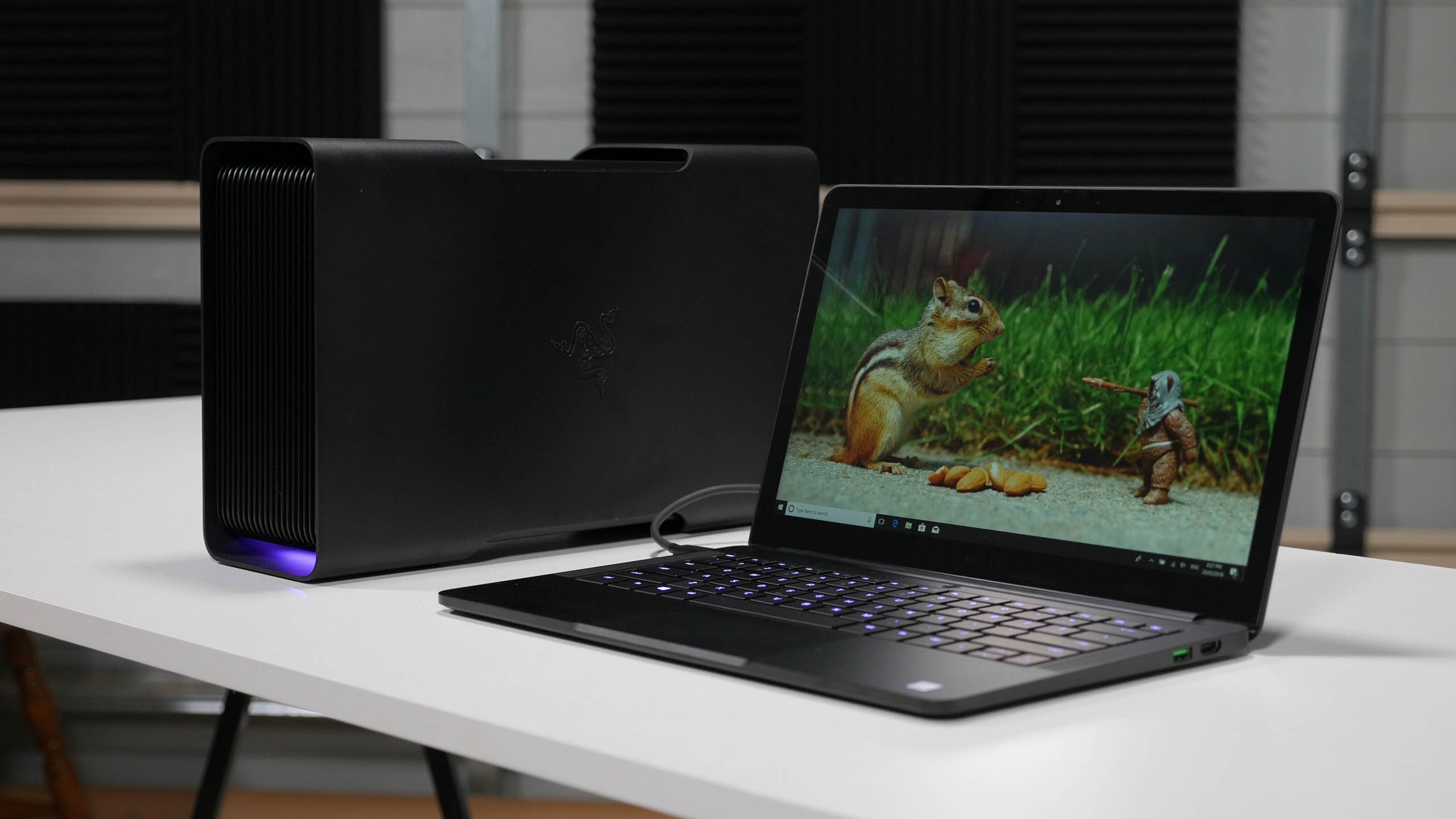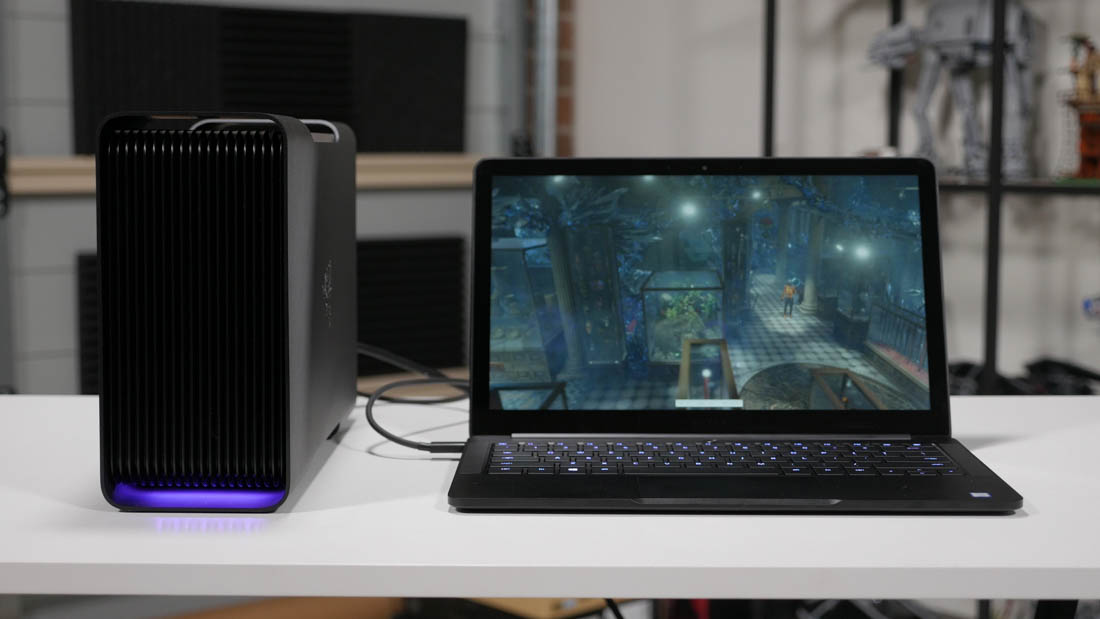Final Thoughts
My thoughts on the Blade Stealth have not changed since last time I reviewed this laptop: I like it a lot. The build quality is excellent and complemented well by the RGB keyboard and trackpad. The high resolution display and is good, bezel size is good. It's also great to see the improved performance the Core i7-8550U provides, and unlike some other laptops I've reviewed, Razer's cooling solution can keep the 15W CPU performing as expected.
There's no doubting this is a premium laptop, and that's reflected by the $1500 price tag, however Razer does give you top-end hardware for that price: the 8550U and 16GB of RAM are standard, as is the high resolution display, while other laptops cut back with their entry level models. As an alternative, last year's Blade Stealth which is very similar but slower, is still being sold for around $1250.
Directly comparing the Blade Stealth to other premium laptops shows it's fairly priced, which might surprise some when the base cost is so high.
My only real concern with the Blade Stealth continues to be the battery life; you can get better results from similar laptops, such as the outstanding Dell XPS 13. Aside from that, the Blade Stealth gets my tick of approval, provided you don't fall foul of the occasional QA issues Razer has had with the unit over the past few years.
I'm not as sold on the Core V2, but there are some areas it outperforms its competitors. It's a well-made box, it works as advertised and in the case of USB peripherals, better than other eGPUs, and supports a wide range of GPUs. But the absolute killer and the reason I simply cannot recommend this eGPU enclosure, is the price tag.
Razer is charging $500 for this enclosure without a GPU installed, which is quite frankly ludicrous. Assume graphics cards are available at their MSRP, a Razer Core V2 with a GTX 1060 would cost you $750. Gigabyte's Aorus GTX 1080 Gaming Box has an MSRP of $700 and includes a GTX 1080.
Both eGPUs work with Razer laptops, yet the Aorus offering provides 33 percent more performance for $50 less. Or you could get the GTX 1070 Gaming Box, which retails for $600: just $100 more than the Razer Core V2 yet it includes a full GTX 1070.
Of course, right now the Aorus Gaming Boxes are hard to find with the GPU shortage, but even then, you can get other Thunderbolt 3 GPU enclosures for roughly half the price of the Razer Core V2. This Akitio Node unit doesn't look as nice as the Core V2, but the $230 you save could go directly to a better GPU. It just makes it so hard to recommend a product as expensive as the Core V2 when there are plenty of other alternatives that do basically the same thing for less money.
And that's where I'm at with the Core V2. Were this product $250 or even just $200 cheaper, it'd be a decent purchase considering all the things it does well. But $500 is not competitive. Stick to just the Blade Stealth and use a different eGPU if you want external graphics power, as Razer's ultraportable laptop continues to impress.
Shopping Shortcuts:
As a side note, it should be mentioned that Razer keeps selling last year's Blade Stealth that uses the 7th-gen Core i7 CPU for ~$1250. It won't perform nearly as good, but it keeps the same build quality, design and RAM capacity.
Razer Blade Stealth Scoreboard
Pros: Metal unibody construction is solid, well built and looks stunning. Great performance offered by Intel's latest CPU for premium ultraportables, aided by a good cooling solution. 16GB RAM is standard. RGB keyboard, full-sized USB, HDMI, and a great trackpad.
Cons: Battery life could be better. Not an inexpensive solution.
Razer Core v2 Scoreboard
score
Pros: Sold standalone, let's you choose your own graphics card or use a GPU you already own. Works with most Thunderbolt 3 laptops. Fits most graphics cards (making it a tad large). Build quality is top notch. Great connectivity options, including USB 3.0 hub and Ethernet.
Cons: Way too expensive, makes the Core v2 less competitive overall. Performance is good, but not great, like any other current eGPU enclosure, Thunderbolt 3 still doesn't provide all the bandwidth necessary to push graphics performance to the max.




